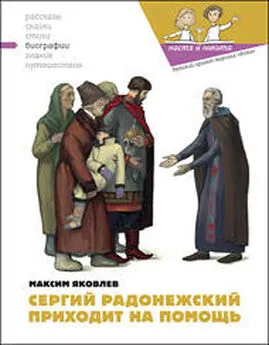Максим Шапиро - Гуманитарная помощь
- Название:Гуманитарная помощь
- Автор:
- Жанр:
- Издательство:неизвестно
- Год:2015
- ISBN:нет данных
- Рейтинг:
- Избранное:Добавить в избранное
-
Отзывы:
-
Ваша оценка:
Максим Шапиро - Гуманитарная помощь краткое содержание
Гуманитарная помощь - читать онлайн бесплатно полную версию (весь текст целиком)
Интервал:
Закладка:
174
Sahlins, M. (1998). The original affluent society. Limited wants, unlimited means: A reader on hunter-gatherer economics and the environment, 5-41.
175
Birdsel , J. B. (1968). Some predictions for the Pleistocene based on equilibrium systems among recent hunter-gatherers.
176
Lee, R. B. (1980). Lactation ovulation infanticide and womens work: a study of hunter-gatherer population regulation.
177
Winterhalder, B. (1986). Diet choice, risk, and food sharing in a stochastic environment. Journal of Anthropological Archaeology, 5(4), 369-392.
178
Eldakar, O. T., Gallup, A. C., & Driscoll, W. W. (2013). When hawks give rise to doves: The evolution and transition of enforcement strategies. Evolution, 67(6), 1549-1560.
179
Fehr, E., Bernhard, H., & Rockenbach, B. (2008). Egalitarianism in young children. Nature, 454(7208), 1079-1083.
180
Talhelm, T., Zhang, X., Oishi, S., Shimin, C., Duan, D., Lan, X., & Kitayama, S. (2014). Large-Scale Psychological Differences Within China Explained by Rice Versus Wheat Agriculture. Science, 344(6184), 603-608.
181
Henrich, J. (2014). Rice, Psychology, and Innovation.
182
Lin, N. (2002). Social capital: a theory of social structure and action (structural analysis in the social sciences).
183
Wil iamson, O. E. (1979). Transaction-cost economics: the governance of contractual relations. Journal of law and economics, 233-261.
184
Richardson, C. J. (2005). Loss of Property Rights and the Collapse of Zimbabwe, The. Cato J. , 25, 541.
185
Apicel a, C. L., Azevedo, E. M., Fowler, J. H., & Christakis, N. A. (2013). Evolutionary origins of the endowment effect: evidence from hunter-gatherers. American Economic Review, Forthcoming.
186
Kahneman, D., Knetsch, J. L., & Thaler, R. H. (1991). Anomalies: The endowment effect, loss aversion, and status quo bias. The journal of economic perspectives, 193-206.
187
Lakshminaryanan, V., Chen, M. K., & Santos, L. R. (2008). Endowment effect in capuchin monkeys. Philosophical Transactions of the Royal Society B: Biological Sciences, 363(1511), 3837-3844.
188
Tversky, A., & Kahneman, D. (1991). Loss aversion in riskless choice: A reference-dependent model. The Quarterly Journal of Economics, 1039-1061.
189
Brosnan, S. F., Jones, O. D., Lambeth, S. P., Mareno, M. C., Richardson, A. S., & Schapiro, S. J. (2007). Endowment effects in chimpanzees. Current Biology, 17(19), 1704-1707.
190
Dufour, V., Pelé, M., Sterck, E. H. M., & Thierry, B. (2007). Chimpanzee (Pan troglodytes) anticipation of food return: Coping with waiting time in an exchange task. Journal of Comparative Psychology, 121(2), 145.
191
Mischel, W., Ebbesen, E. B., & Raskoff Zeiss, A. (1972). Cognitive and attentional mechanisms in delay of gratification. Journal of personality and social psychology, 21(2), 204.
192
Mischel, W., Shoda, Y., & Rodriguez, M. I. (1989). Delay of gratification in children. Science, 244(4907), 933-938.
193
Boysen, S. T., Berntson, G. G., Hannan, M. B., & Cacioppo, J. T. (1996). Quantity-based interference and symbolic representations in chimpanzees (Pan troglodytes). Journal of Experimental Psychology: Animal Behavior Processes, 22(1), 76.
194
Maddux, W. W., Yang, H., Falk, C., Adam, H., Adair, W., Endo, Y., .. & Heine, S. J. (2010). For whom is parting with possessions more painful? Cultural differences in the endowment effect. Psychological Science, 21(12), 1910-1917.
195
Pal ot, J. (1999). Land Reform in Russia, 1906-1917: Peasant Responses to Stolypin's Project of Rural Transformation: Peasant Responses to Stolypin's Project of Rural Transformation. Oxford University Press.
196
Guzmán, R. A., & Weisdorf, J. (2011). The Neolithic Revolution from a price-theoretic perspective. Journal of Development Economics, 96(2), 209-219.
197
Bentley, G. R., Goldberg, T., & Jasieńska, G. Z. Y. (1993). The fertility of agricultural and non-agricultural traditional societies. Population Studies, 47(2), 269-281.
198
Rowthorn, R., Guzmán, R. A., & Rodríguez-Sickert, C. (2011). The economics of social stratification in premodern societies.
199
Szegedy, C., Zaremba, W., Sutskever, I., Bruna, J., Erhan, D., Goodfel ow, I., & Fergus, R. (2013). Intriguing properties of neural networks. arXiv preprint arXiv:1312.6199.
200
Murphy, D. J., & Hall, C. A. (2010). Year in review—EROI or energy return on (energy) invested. Annals of the New York Academy of Sciences, 1185(1), 102-118.
201
Convention on the Prevention and Punishment of the Crime of Genocide. Adopted by Resolution 260 (I I) A of the United Nations General Assembly on 9 December 1948.
202
Galor, O., & Weil, D. N. (2000). Population, technology, and growth: From Malthusian stagnation to the demographic transition and beyond. American economic review, 806-828.
203
Nauck, B. (2001). Der Wert von Kindern für ihre Eltern. KZfSS Kölner Zeitschrift für Soziologie und Sozialpsychologie, 53(3), 407-435.
204
Friedman, D., Hechter, M., & Kanazawa, S. (1994). A theory of the value of children. Demography, 31(3), 375-401.
205
Becker, G. S., & Becker, G. S. (2009). A Treatise on the Family. Harvard university press.
206
Hazan, M., & Berdugo, B. (2002). Child Labour, Fertility, and Economic Growth*. The Economic Journal, 112(482), 810-828.
207
Myrskylä, M., Kohler, H. P., & Bil ari, F. C. (2009). Advances in development reverse fertility declines. Nature, 460(7256), 741-743.
208
Azarnert, L. V. (2008). Foreign aid, fertility and human capital accumulation. Economica, 75(300), 766-781.
209
Smil, V. (2011). Nitrogen cycle and world food production. World Agriculture, 2, 9-13.
210
Howarth, R. W. (2008). Coastal nitrogen pollution: a review of sources and trends globally and regionally. Harmful Algae, 8(1), 14-20.
211
Grudgings Stuart (2009) Brazil attacks church opposition to girl's abortion. Reuters http://www.reuters.com/article/2009/03/05/us-brazil-abortion-idUSTRE5247DU20090305
212
Goldreich, O., & Oren, Y. (1994). Definitions and properties of zero-knowledge proof systems. Journal of Cryptology, 7(1), 1-32.
213
Zhang, F., & Kim, K. (2002). ID-based blind signature and ring signature from pairings. In Advances in cryptology—ASIACRYPT 2002 (pp. 533-547). Springer Berlin Heidelberg.
214
Polman, L. (2010). War games: the story of aid and war in modern times. Penguin UK.
215
Moyo, D. (2009). Dead aid: Why aid is not working and how there is a better way for Africa. Macmil an.
216
Polman, L. (2010). The crisis caravan: what's wrong with humanitarian aid? . Macmil an.
217
Bono's ONE foundation under fire for giving little over 1% of funds to charity http://www.dailymail.co.uk/news/article- 1314543/Bonos-ONE-foundation-giving-tiny-percentage-funds-charity.html
218
In 2013, The Clinton Foundation Only Spent 10 Percent Of Its Budget On Charitable Grants http://thefederalist.com/2015/04/27/in-2013-the-clinton-foundation-only-spent-10-percent-of-its-budget-on-charitable-grants/
219
Ruffin, R. (2002). David Ricardo's discovery of comparative advantage. History of Political Economy, 34(4), 727-748.
220
Mitchel, D. (2008). A note on rising food prices. World Bank Policy Research Working Paper Series, Vol.
221
Séralini GE, Clair E, Mesnage R, Gress S, Defarge N, Malatesta M, Hennequin D, de Vendômois JS (September 2012). «Long term toxicity of a Roundup herbicide and a Roundup-tolerant genetical y modified maize». Food Chem. Toxicol. 50 (11): 4221–31. DOI:10.1016/j.fct.2012.08.005. PMID 22999595.
222
Arjó, G., Portero, M., Pinol, C., Vinas, J., Matias-Guiu, X., Capel , T., . . & Christou, P. (2013). Plurality of opinion, scientific discourse and pseudoscience: an in depth analysis of the Séralini et al. study claiming that Roundup™ Ready corn or the herbicide Roundup™ cause cancer in rats. Transgenic research, 22(2), 255-267.
223
Masoro, E. J. (1980). Mortality and growth characteristics of rat strains commonly used in aging research. Experimental aging research, 6(3), 219-233.
224
Suzuki, H., Mohr, U., & Kimmerle, G. (1979). Spontaneous endocrine tumors in Sprague-Dawley rats. Journal of cancer research and clinical oncology, 95(2), 187-196.
225
Ricroch, A. E. (2013). Assessment of GE food safety using ‘-omics’ techniques and long-term animal feeding studies. New Biotechnology, 30(4), 349-354.
226
Panchin, A. Y. (2013). Toxicity of roundup-tolerant genetical y modified maize is not supported by statistical tests. Food and Chemical Toxicology, (53), 475.
227
Casassus, B. (2013). Study linking GM maize to rat tumours is retracted. Nature.
228
National Science Board. 2012. Science and Engineering Indicators 2012. Arlington VA: National Science Foundation (NSB 12-01). http://www.nsf.gov/statistics/seind12/c7/tt07-09.htm
229
American Medical Association (2012). "Report 2 of the Council on Science and Public Health: Labeling of Bioengineered Foods" "Bioengineered foods have been consumed for close to 20 years, and during that time, no overt consequences on human health have been reported and/or substantiated in the peer-reviewed literature." (first page)
230
United States Institute of Medicine and National Research Council (2004). "Safety of Genetical y Engineered Foods: Approaches to Assessing Unintended Health Effects". National Academies Press. Free ful -text. National Academies Press. pp R9-10: "In contrast to adverse health effects that have been associated with some traditional food production methods, similar serious health effects have not been identified as a result of genetic engineering techniques used in food production. This may be because developers of bioengineered organisms perform extensive compositional analyses to determine that each phenotype is desirable and to ensure that unintended changes have not occurred in key components of food."
231
Key S, Ma JK, Drake PM (June 2008). "Genetical y modified plants and human health". J R Soc Med 101 (6): 290–8. doi:10.1258/jrsm.2008.070372. PMC 2408621. PMID 18515776. pp 292-293. "Foods derived from GM crops have been consumed by hundreds of mil ions of people across the world for more than 15 years, with no reported il effects (or legal cases related to human health), despite many of the consumers coming from that most litigious of countries, the USA."
Читать дальшеИнтервал:
Закладка:








